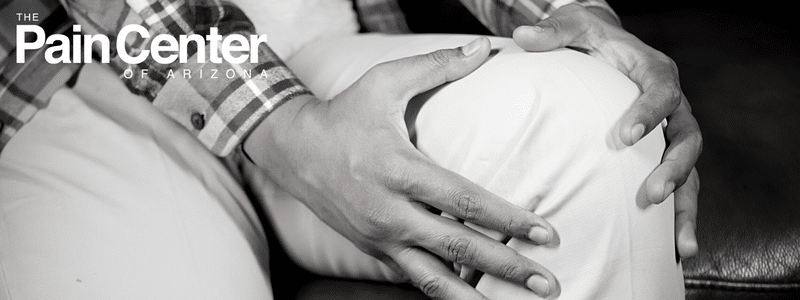
Wondering about inside knee pain after running? You might be experiencing patellofemoral pain syndrome. Read more about symptoms & treatments here.
In this blog, we’ll cover:
- What is runner’s knee?
- Why does the inside of my knee hurt after I run?
- Is it okay to run with knee pain?
- How is runner’s knee diagnosed?
- How to treat knee pain after running
- How to stop my knee from hurting when I run
- How to beat runner’s knee with medical treatment
What is Runner’s Knee?
Technically called patellofemoral pain syndrome, a runner’s knee is when you have pain in front of, around, or behind your kneecap when performing any activity requiring you to bend your knee, including walking, getting up, squatting, running, etc. You might even notice increased pain when walking downstairs or downhill.
Other symptoms might include rubbing, grinding, or clicking when bending and straightening your knee and a tender kneecap.
Why Does the Inside of My Knee Hurt After I Run?

There are several causes of knee pain that can either be caused by trauma, irritation, or underlying conditions:
- Overuse from high-stress training or exercises resulting in irritating tissues in your kneecap
- Direct injury to your knee
- Misaligned bones between your hips and ankles causing excess pressure on your knee
- Foot problems such as hypermobile feet, fallen arches, or overpronation
- Tight Achilles tendon
- Thigh muscle weakness or imbalance
- Chondromalacia patella, which breaks down the cartilage under your kneecap
Is this pain a sign of something serious?
It could be minor, like muscle strain, or more significant, like a meniscus tear or arthritis. Persistent or worsening pain deserves a check-up.
Is It Okay to Run with Knee Pain?
Ultimately, no. If you’re experiencing knee pain after exercising, you need to rest it until the pain dissipates. If it returns during use again, then you’ve likely got a bigger problem that self-care and home remedies won’t resolve.
Don’t rush! You’ll know you’re ready to get back out there if:
- You bend and straighten your knee without pain
- Your knee is painless when walking, jogging, sprinting, jumping, etc.
- Your knee feels no different than your other one
How is Runner’s Knee Diagnosed?

Runner’s Knee is diagnosed by a thorough physical exam given by your doctor, usually involving X-rays to examine the inside of your joint.
How to Treat Knee Pain After Running
There are plenty of ways to treat your knee pain after running:
- Rest It. Don’t worsen your knee problem by using it before it’s ready. Rest your knee and avoid any activity that’ll strain it, including walking if you must.
- Ice It. Fight back against the pain and swelling with 20-30 minute icing sessions every few hours for up to 3 days.
- Wrap It. Support your knee with elastic bandaging, patellar straps, or sleeves.
- Elevate It. Take some pressure off by elevating your leg with a pillow when sitting or lying down.
- Take NSAIDs. If you need a little extra help staving off high-level pain, ibuprofen or naproxen are options for temporary pain relief. But be careful, as NSAIDs may have side effects as well as risks. Use as directed, and always consult your doctor with any questions before using it.
- Stretch and Strengthen. Strengthen the muscles and ligaments supporting your knee, such as the quadriceps. Consult your doctor for physical therapy if you are considering this option.
- Arch Supports or Orthotics. These will help correct your foot positioning, which could very well cause knee pain.
How long does it take to recover from inside knee pain?
Recovery depends on the cause—minor strains might heal in weeks with rest, while injuries like ligament tears could take longer.
How Do I Stop My Inner Knee from Hurting When I Run?

Some proactive measures you can take to prevent Runner’s Knee include:
- Regularly exercise your thigh muscles
- Wear quality, supportive running shoes
- Avoid running on hard surfaces like concrete
- Keep a healthy weight to alleviate pressure on your knees
- Stretch and warm up before your run or workout session
- Cautiously add intense exercises to your workout regimen
- Consult your doctor about physical therapy
- Replace your shoes when they wear out
How to Beat Runner’s Knee with Medical Treatment
If resting your knee and other methods aren’t enough to resolve your runner’s knee pain, you may have damaged cartilage or a displaced kneecap, which may require surgery.
Cortisone joint injections can temporarily alleviate knee pain as it recovers, but it’s important to consider more permanent options to live comfortably long term.




